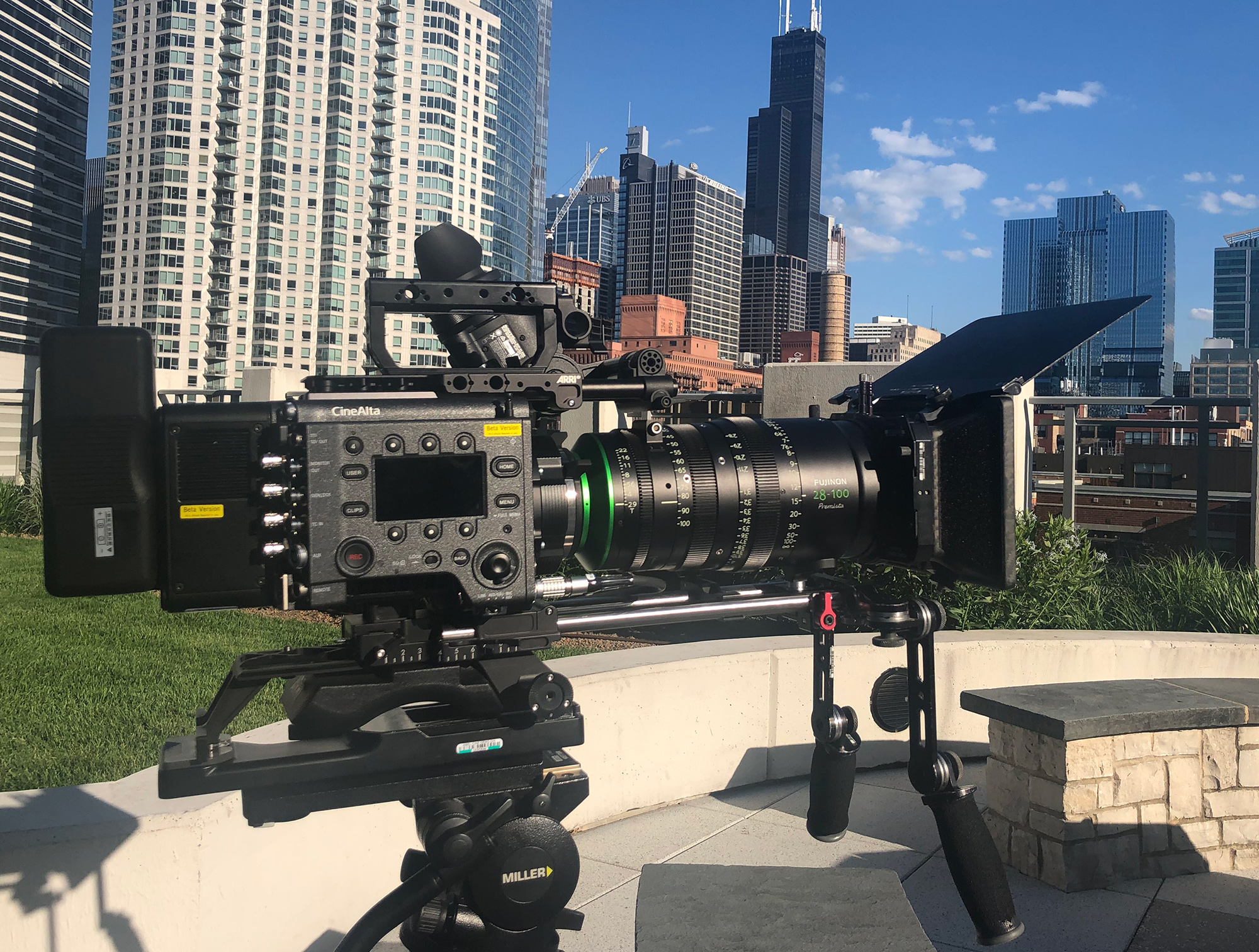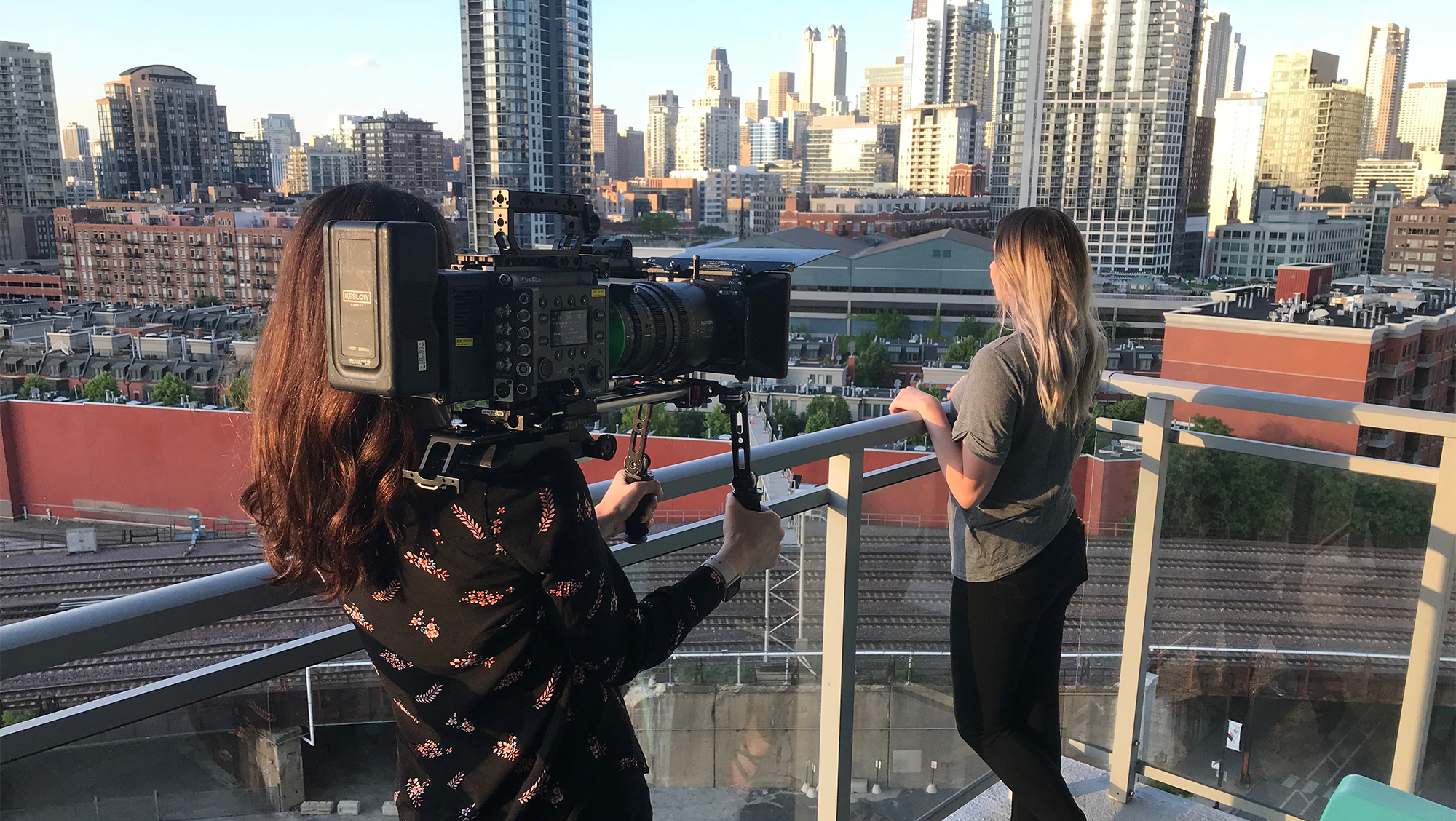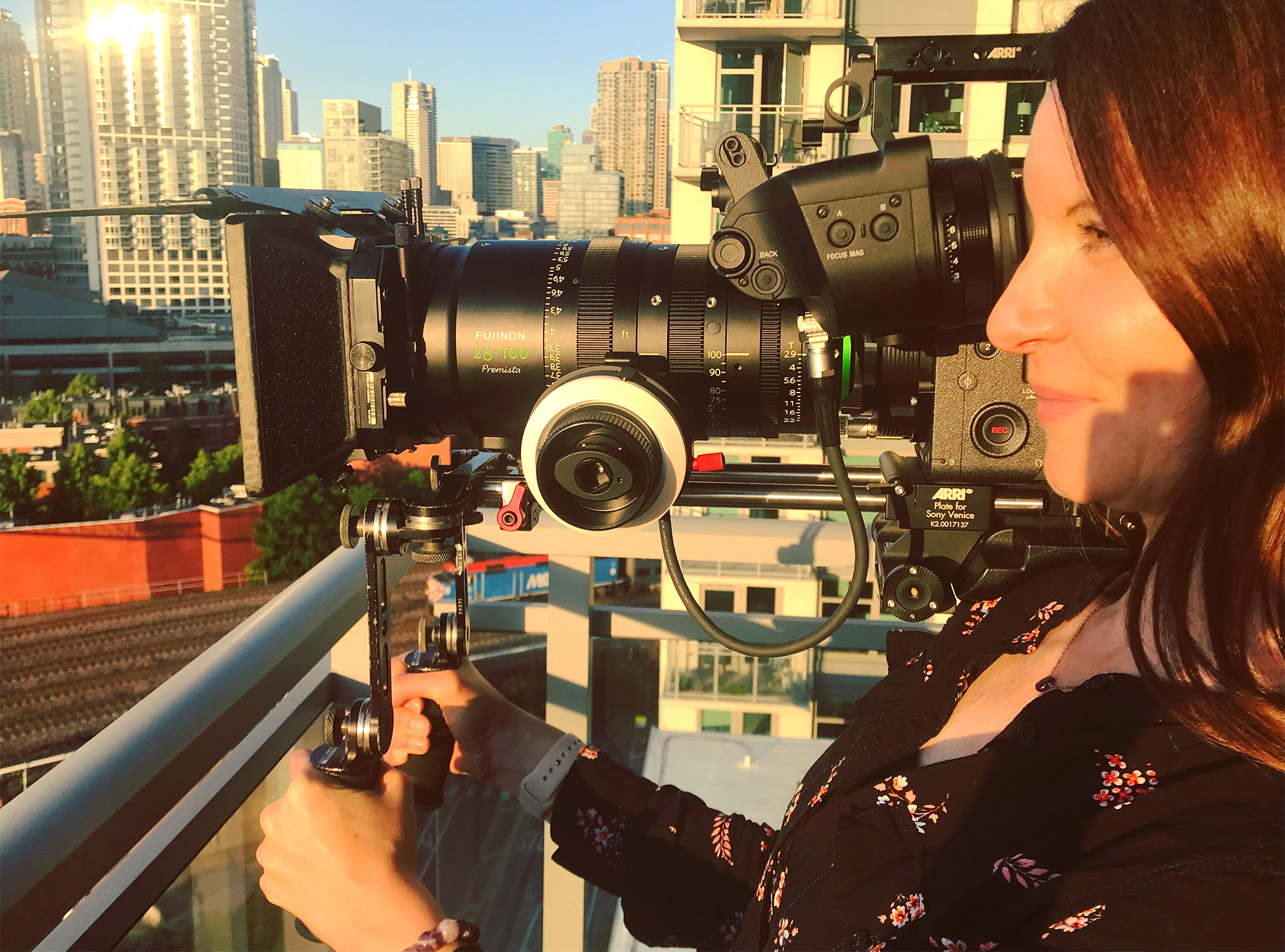Named after the Premier line, Fujinon’s top-of-the-line zooms, and VistaVision, both lenses cover an image circle of 46.3mm, which means they will cover full format camera systems. With a diameter of 114mm, ZEISS Extended Data and Cooke's Lens Data System, plus a flange focus adjustment function, the Premistas will not only allow cinematographers to capture the beauty of full frame but also offer a versatile set up. Watch my video to find out more technical specs of this beautiful lens and view test footage.
For my test footage, I shot with the Premista 28-100mm on a Sony VENICE. I recorded AXS media in 6K 3:2 OXCN ST, as well as dual recorded on SxS media in 4K for back up. Everything was shot at 23.98 fps aside from a few close up shots that were over cranked to 60 fps. This zoom weighs a little over 8lbs, so I decided to rig it in a lightweight set up for handheld work. I find it particularly exciting that I can shoot with a full frame camera and zoom and remain handheld. The zoom range is quite perfect. 28-100mm are the main focal lengths I use when shooting a majority of projects. Typically this range is covered in a six lens prime set, so you could shoot an entire project on this one zoom.

I set up a few different scenarios in order to test the lens in different lighting conditions. First, I filmed an interior scene lit by a Litepanel 1x1 set to 3200K. I added a string of Christmas tree lights behind the subject to test the bokeh. Then I shot a short exterior sequence on a rooftop and balcony in Chicago. Both scenes were shot at T2.9. Overall I was very impressed with this lens and feel it strikes a great balance between the sharpness we need when shooting full frame while still capturing the natural color, skin tones, contrast, and textures of the world.
Let’s take a look at a few technical and aesthetic aspects we typically evaluate when testing a new lens.
Color
I was very impressed with the natural color rendition of this lens. If you take a look at the skin tones in both scenes as well as the purple and green surroundings in the exteriors, I feel the color is very natural and appealing. Also as the sun began to set, I loved the way it captured the beginning of magic hour.
Contrast
When we talk about contrast in lenses, we are talking about the way that the lens represents micro-differences in brightness. With the Premista, the gradation is very rich.

Breathing
One thing I noticed is that this zoom has little to no breathing. I purposely set up a few rack focuses in all my test footage to test the breathing, and no breathing is discernable.
Resolution
To test how well the lens captured resolution, I used one of the Cameo Resolution Analysis Charts. I set up the camera at 10’ away and shot all the way open in order to see how it performed under challenging situations. I then shot the resolution chart at multiple different focal lengths. As you can see, the lens provides edge-to-edge sharpness, allowing me to capture the full resolution of the full frame. Yet, I also want to point out that I think this lens strikes a good balance between resolving full frame with a clean and sharp image while maintaining a natural feel.
Depth of Field
I recorded everything with the lens wide open at T2.9 in order to experiment with the depth of field. I found the thirteen blade iris design to create very beautiful bokeh, and the depth of field provided an extremely natural look, allowing the textures and skin tones to appear very rich yet organic.

Build and Design
Weighing in a little over 8lbs, I set up all my shots to be handheld. For a full frame zoom, the lens is fairly compact, while still being very robust so it can be used in all types of set ups. Fluorescent paint is applied to index marks on the focus, zoom and iris rings so that these settings can be easily checked even at night. The focus ring can be rotated as much as 280 degrees, giving a sensation of smooth torque. The lens has a 114mm diameter, a very common diameter that can be used with 4x5 matteboxes. Also, the lens features a flange focus adjustment function, which allows users to adjust the lens when the flange depth changes over time or with temperature changes, something that is unique in the full frame and high-end super 35mm lens world.


















AbelCine encourages comments on our blog posts, as long as they are relevant and respectful in tone. To further professional dialog, we strongly encourage the use of real names. We reserve the right to remove any comments that violate our comment policy.
AbelCine publishes this blog as a free educational resource, and anyone may read the discussions posted here. However, if you want to join the conversation, please log in or register on our site.
We use Disqus to manage comments on this blog. If you already have a Disqus account registered under the same email as your AbelCine account, you will automatically be logged in when you sign in to our site. If not, please create a free account with Disqus using the same email as your AbelCine account.